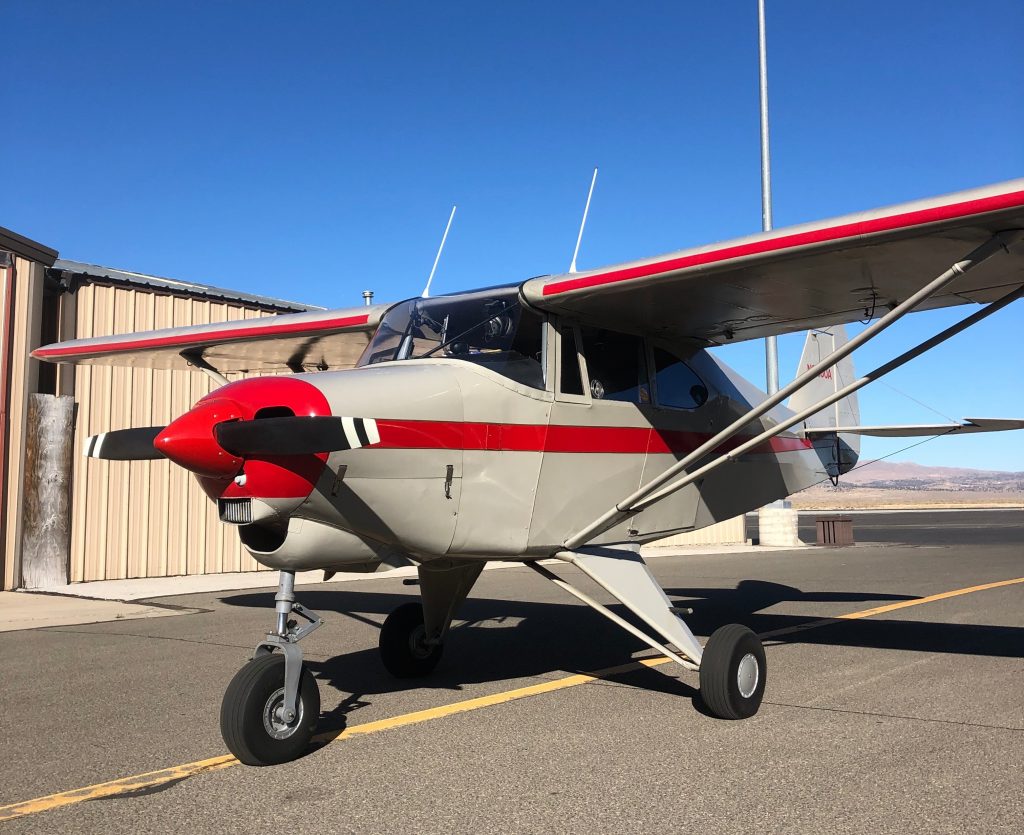Once I settled on a Tri Pacer, the more research I did lead to Google searches of hundreds of Tri Pacer pictures and articles. The final straw in my trade off was seeing a French Air Force Tri Pacer in the French Air force Museum! Now the Tri Pacer solved cargo load, tricycle landing gear and an aircraft, which I could restore as a war bird replica. Not only did the French receive 12 aircraft for the war in Algeria, Cuban forces fighting Castro and the South African Air Forces received 12 aircraft each in their original Tri Pacer livery right from Piper factory in Lock Haven PA. Each country then militarized their Tri Pacers. Tri Pacers dropped hand grenades, smoke markers for bombers and some removed the rear door to mount a .30 cal. Machine Gun! Their missions where typical “L-Bird” ones of recon, artillery spotting, resupply, medical evac and convoy support. All services modified their Tri Pacers to support these missions.
My 6-month search started for N2650A. Trade-a-plane and Barnstormers where read multiple times a day. I joined the Short Wing club. In preparation for buying one I knew would not find one in my backyard of Reno so I flew to Portland Or. for a Tri Pacer check out. My IA who would assist me in maintenance for a certified plane gave me a call one day and he had seen a Tri Pacer I had missed in Barnstormers. N2650A (1952-Pa 22-135 up engined to 160 HP) was purchased from a great pair of son and father owners in the Dayton OH area. The great adventure started as I commercially flew to Dayton to bring N2650A home to Reno.
It was smooth flying against the typical west to east coast head winds and I can true fully tell you that the scenery didn’t change from Dayton to Rawlins WY! Green farm fields and red silos! August 25, 2019 N2650A landed at the Reno Stead airfield and within a week I started the restoration and transformation into my war bird.
Researching a 69-year-old Tri Pacer war bird is similar to what Egyptologists have done for two hundred years, dig up what facts are obvious and use educated guesses on the rest! Not many of any first hand Tri Pacer accounts, photos or written history remain. The Cuban forces lost to Castro so nothing historical is left from Cuba and the South African Tri Pacers disappeared into the desert. The French Air Force has their two remaining Tri Pacers in the French Air Force Museum with all technical and military historical data for N2650A’s replica transformation.
The original gyro panel was restored to French Marine Corps standard except for FFA modern day requirements of ADSB transponder.
The first challenge was to do the interior. I needed to upgrade to an ADS-B transponder, which I chose the Appareo Stratus ESG. N2650A’s son and father owners had yellow tagged a great Terra 1998 era NAV_COM and a King GPS 89. Using iPad map and chart capability allows basic IFR flights and more then adequate VFR flights with my nostalgic gyro panel.


